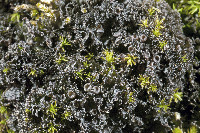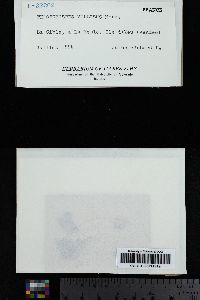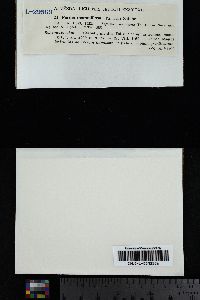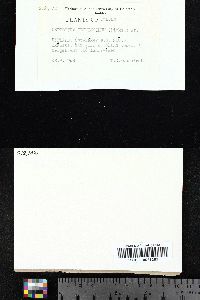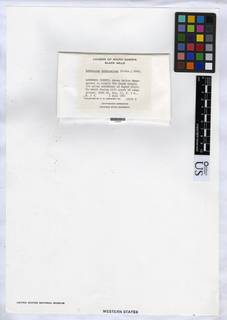
Consortium of Lichen Herbaria
- building a Global Consortium of Bryophytes and Lichens as keystones of cryptobiotic communities -
- Home
- Search
- Images
- Species Checklists
- US States: O-Z >
- US National Parks
- Central America
- South America
- US National Parks
- Southern Subpolar Region
|
Scytinium tenuissimum (Dickson) Otálora, P.M. Jørg. & Wedin
 (redirected from: Leptogium tenuissimum (Dickson) Körb.) (redirected from: Leptogium tenuissimum (Dickson) Körb.) |
|
|
Family: Collemataceae
[Collema tenuissimum Hoffm., moreLeptogium humosum Nyl., Leptogium lividofuscum (Schltdl.) Flot., Leptogium tenuissimum (Dickson) Körb., Parmelia tenuissima (Hoffm.) Ach., Polychidium humosum (Nyl.) Trevis., Polychidium tenuissimum (Hoffm.) Gray] |
Nash, T.H., Ryan, B.D., Gries, C., Bungartz, F., (eds.) 2004. Lichen Flora of the Greater Sonoran Desert Region. Vol 2. Thallus: minutely foliose, lobes coalescing to form a crust-like cushion, 1-2 cm wide lobes: irregular, flattened, elongate, imbricate, often dissected (torn?); main branches 1-2 mm wide; dissected branches: 0.1-0.2(-2) mm wide, (45-)80-100 µm thick; apices: developing long cylindrical to coralloid isidial-like appendages surface: medium gray to brownish gray or black, smooth to granular, not isidiate but with clusters of coralloid outgrowths internal anatomy: with upper and lower cortices consisting of irregularly isodiametrical cells 12-16 µm in diam., internally paraplectenchymatous and with loosely interwoven chains of Nostoc Apothecia: common, laminal, sessile, 0.1-0.8 mm wide disc: light to dark brown to black, concave to plane margin: thalline, concolorous with the thallus or paler, entire exciple: euparaplectenchymatous but difficult to discern, 10-20 µm thick centrally hymenium: hyaline below and thinly yellow to brown above, 105-180 µm tall; paraphyses: unbranched, c. 1 µm wide, slightly inflated apically; subhymenium: pale gray, 25-35 µm thick asci: cylindrico-clavate, 8-spored ascospores: hyaline, submuriform to muriform, 3-7-septate transversely, 0-2-septate longitudinally, ellipsoid to subfusiform, 17-37 x 9-14 µm Pycnidia: not observed Spot tests: all negative Secondary metabolites: none detected. Substrate and ecology: among mosses on calcareous soil World distribution: Europe, Asia and North America, especially in arctic areas Sonoran distribution: Arizona, southern California and Baja California (Guadalupe Island). Notes: Previously Leptogium tenuissimum was confused with L. subtile, a much smaller species with smaller, globose apothecia and terete thallus lobes. |
Powered by Symbiota


